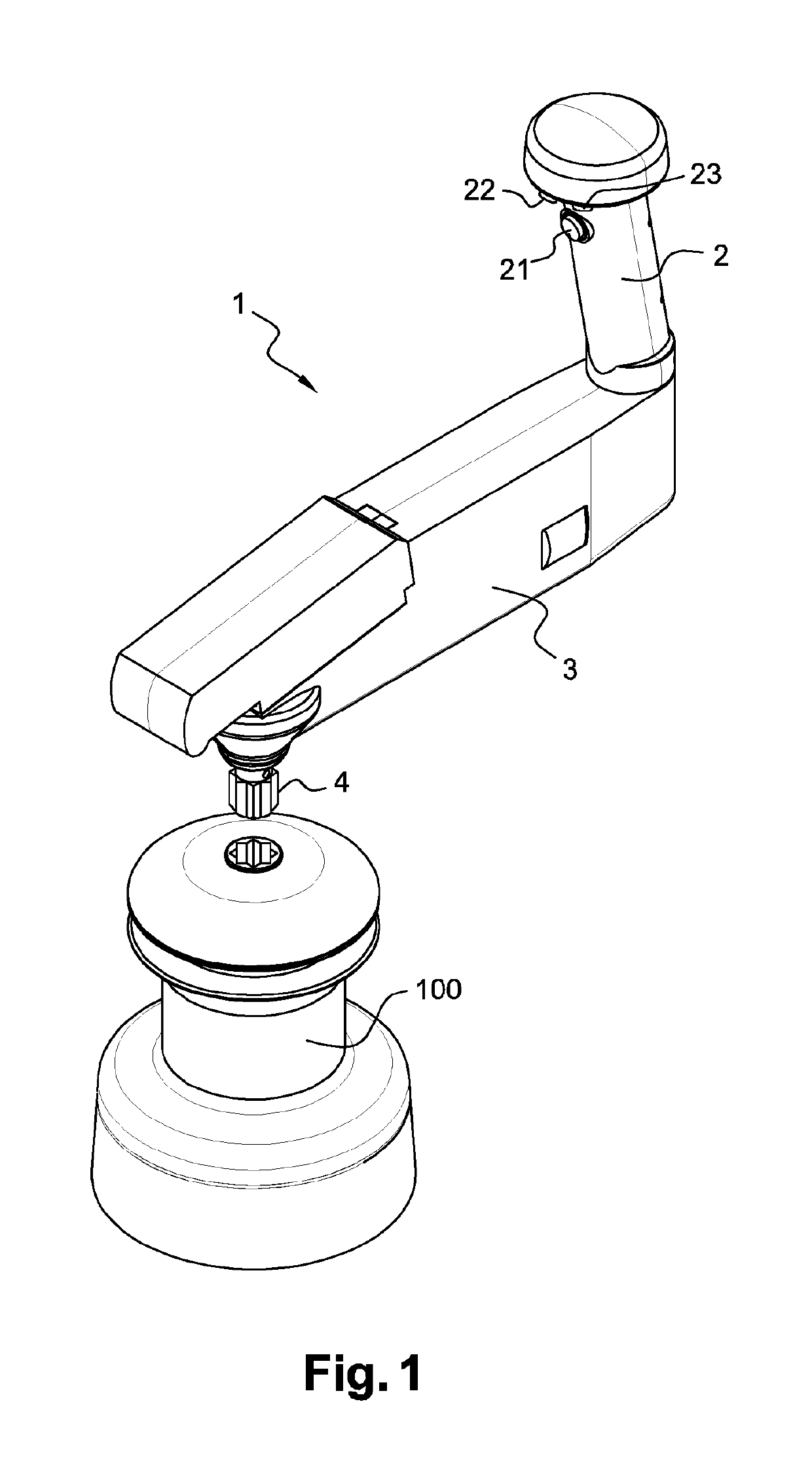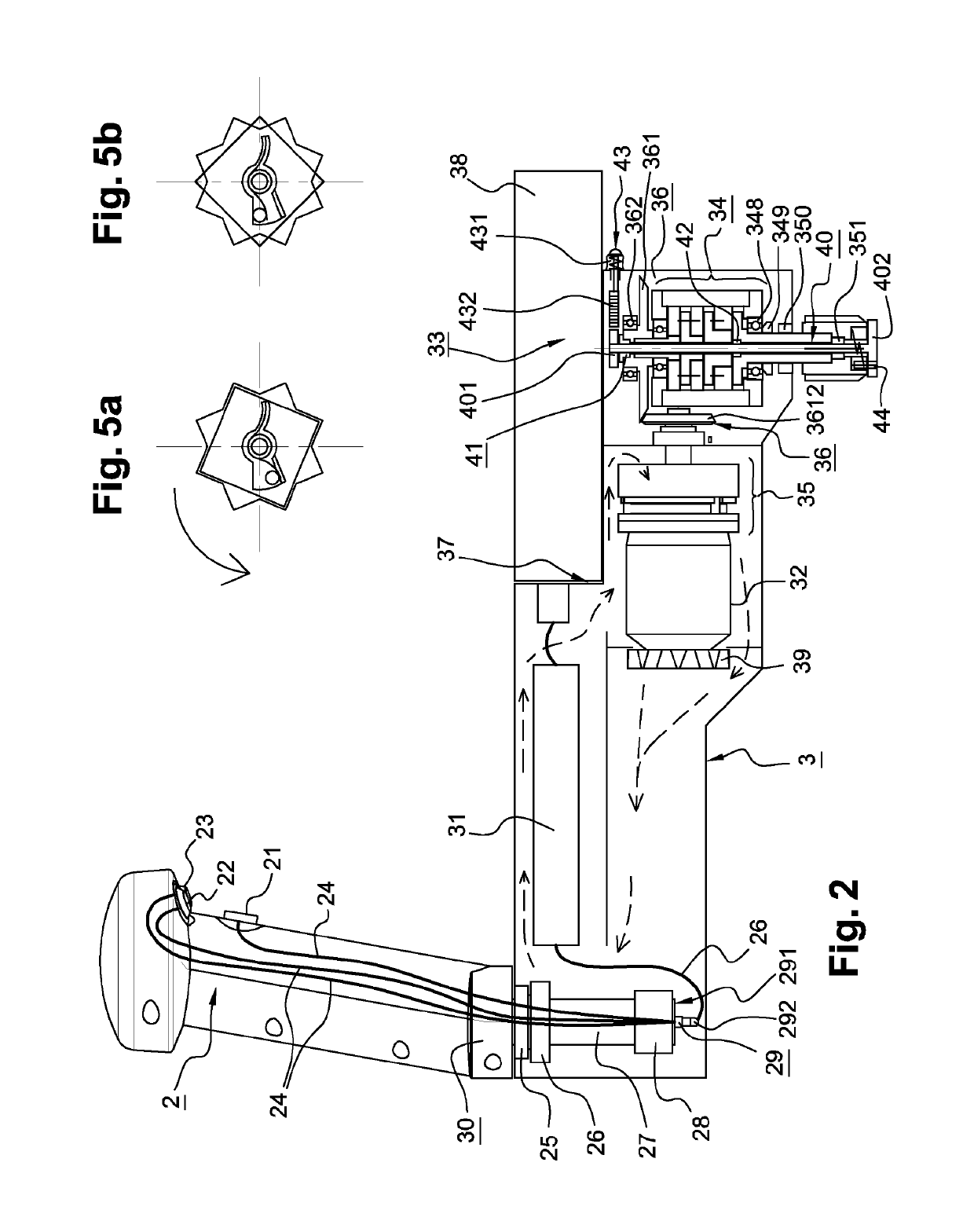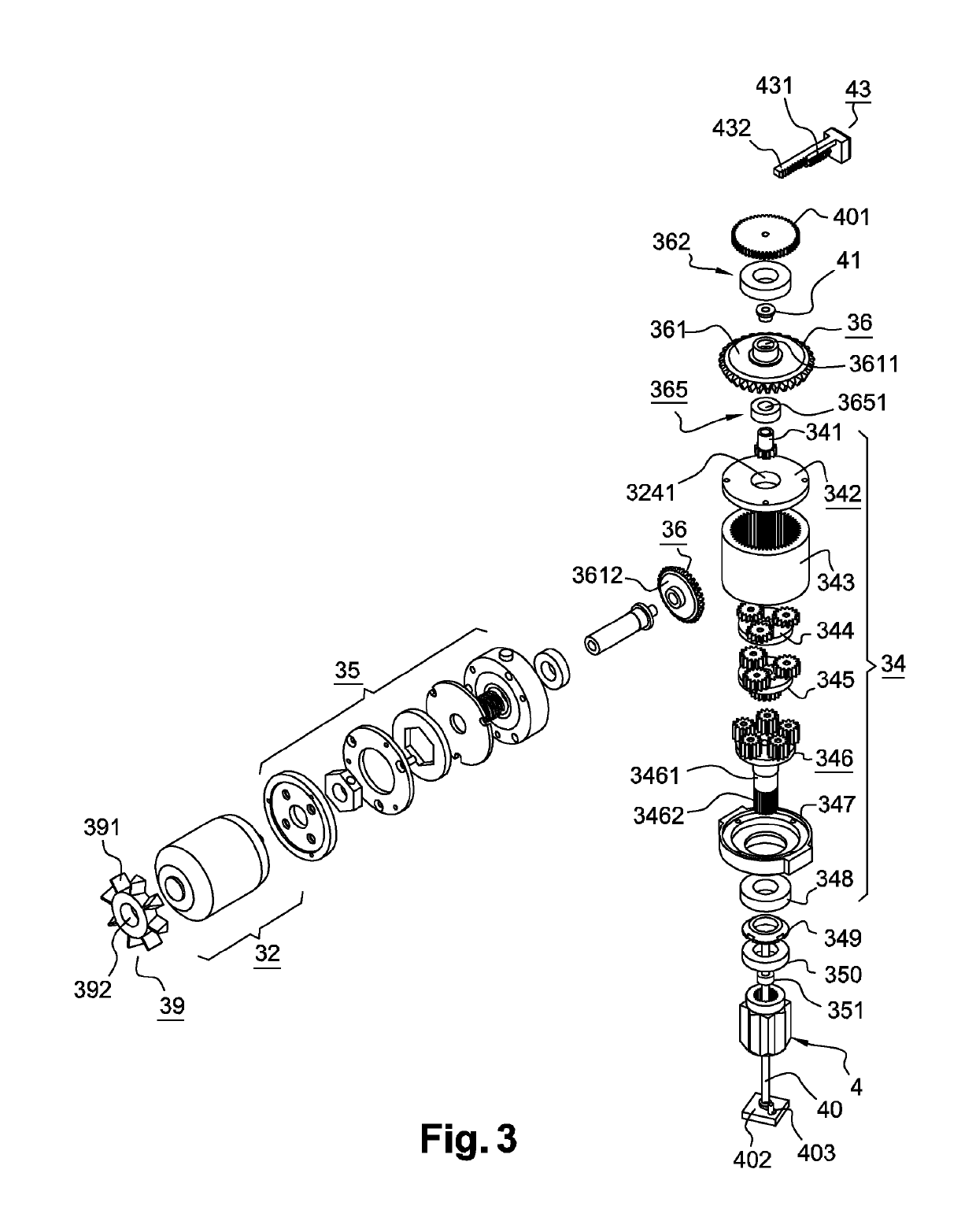Electric winch crank
a winch crank and electric technology, applied in the direction of winding mechanisms, hoisting equipment, etc., can solve the problems of maximum stress on the muscles of the body, uncomfortable position, and motorized crank types, and achieve the effect of reducing the mass of the crank and reducing the rotation speed of the input shaft of the mechanical reducer
- Summary
- Abstract
- Description
- Claims
- Application Information
AI Technical Summary
Benefits of technology
Problems solved by technology
Method used
Image
Examples
first embodiment
[0068] this ventilation system 39 particularly comprises blades 391 and an opening 392 in which the output shaft of the motor 32 is engaged. When the motor 32 turns, the ventilation system 39 and more particularly the rotation of these blades 391, leads to the evacuation of heat by means of air circulation within the volume of the main body 3. The heat is discharged to the outside through the main body 3 of the crank 1. The heat generated by the electronic circuit 31 can also be evacuated by this ventilation system 39. Because of the presence of a lubrication system 139 on the hollow shaft carrying the bevel gear 36, and the mechanical reducer 34, circulation of the ventilation system must if possible, be avoided within this area of the crank 1.
second embodiment
[0069] the ventilation system is an electric fan which has the advantage of operating independently of the motor, because it is preferably controlled by the electronic circuit 31. Thus, this type of fan makes it possible on the one hand to guarantee the circulation of air within the main body and to do so independently of the rotation speed of the motor. On the other hand, it allows heat to be evacuated even after stopping the motor in such a way as to continuously reduce the temperature within the main body.
[0070]The crank can also comprise a thermal diffusion mechanism embedded within the circulation circuit, with the aim of improving the removal of heat within the main body. According to the application, this thermal diffusion mechanism may comprise a set of fins or a plate made of a metallic material, typically of aluminum molded onto the body of the crank, such as to evacuate the heat captured by the diffusion mechanism into the ventilation flow.
[0071]Means of sealing, not show...
PUM
 Login to View More
Login to View More Abstract
Description
Claims
Application Information
 Login to View More
Login to View More - R&D
- Intellectual Property
- Life Sciences
- Materials
- Tech Scout
- Unparalleled Data Quality
- Higher Quality Content
- 60% Fewer Hallucinations
Browse by: Latest US Patents, China's latest patents, Technical Efficacy Thesaurus, Application Domain, Technology Topic, Popular Technical Reports.
© 2025 PatSnap. All rights reserved.Legal|Privacy policy|Modern Slavery Act Transparency Statement|Sitemap|About US| Contact US: help@patsnap.com



